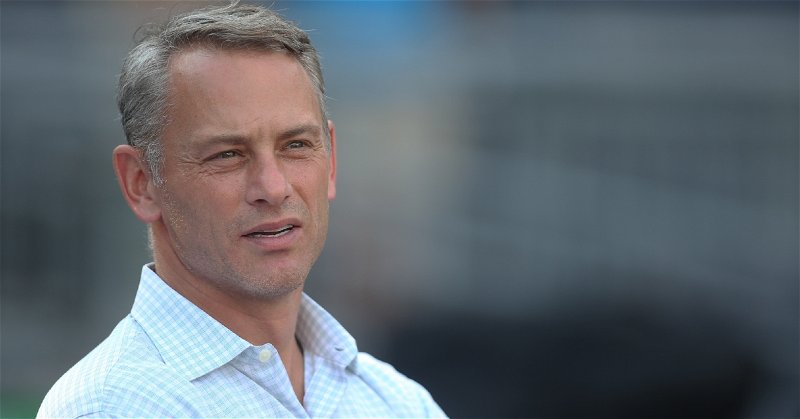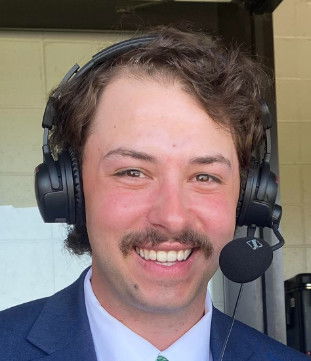
Bears News: Jed Hoyer and Co. delivered again |
Over the years, the Cubs have taken a lot of flack for going cheap and running their organization like a small market team. Especially since 2016 and a few bad contracts — the Cubs have been incredibly frugal and prudent when spending money.
Looking back at the Cubs’ competitive window, it would not be shocking to say that the Cubs felt a dynasty was brewing after their 2016 World Series win. As the years went by, the Cubs were rumored to be in on many free agents that ultimately did not end up in Chicago, from Bryce Harper and Manny Machado to Trea Turner and Xander Bogaerts to Shohei Ohtani and Yoshinobu Yamamoto and many in between. Not to mention the list of Cubs who walked in free agency or were traded without an attempt to be resigned by Chicago: Anthony Rizzo, Kris Bryant, Javier Baez, Kyle Schwarber, Nick Castellanos, Jon Lester, Jake Arrieta, Aroldis Chapman and more. While it is debatable whether some of these signings would not have been smart — over the course of the last few offseasons, criticism has not been hard to come by for the front office regarding their spending, or lack thereof. However, I would argue that the Cubs have done an extraordinary job during the Theo Epstein and now Jed Hoyer era at acquiring pieces that were slam-dunk additions. We have seen multiple years where the Cubs' missing piece is the exact piece acquired. The Cubs always seem to make the moves that they NEED to make. 2014 needed an ace pitcher After the 2014 season, the Cubs showed some promise, but many believed they needed an ace to truly be contenders. The Cubs signed Jon Lester to a six-year, 155 million-dollar deal, and the rest is history. 2015 needed veteran leadership After 2015’s 95-win season, the Cubs were one of the hottest young teams in MLB. But it seemed apparent that the Cubs needed to add some veteran leadership to a pool of young talent. Then came Ben Zobrist, Jason Heyward, John Lackey, and the first Cubs championship in over 100 years. 2016 deadline needed a closer Fans know that despite how polarizing he may be, Aroldis Chapman was a massive factor in that World Series win. At the 2016 trade deadline, the Cubs identified a closer as an area to improve. They targeted Chapman, and he was excellent down the stretch — helping to power the Cubs to that World Series win. 2017 deadline needed a starter After the World Series win, the Cubs’ quest to repeat was off to a bumpy start — thanks partly to some shaky starting pitching. Fast forward to the 2017 trade deadline, and the Cubs gave up a haul (probably too much) to acquire Jose Quintana from the White Sox via trade. 2018 deadline needed a starter Similar to 2017, the Cubs needed some help in the rotation in 2018. The new signings of Yu Darvish and Tyler Chatwood were not working out — so the Cubs acquired Cole Hamels, who was a reliable asset down the stretch. The Cubs viewed him to be needed in 2019 as well and picked up his option so they would not have to panic at the deadline for pitching in 2019. 2019 deadline needed a bat Pitching was not needed this time; the Cubs needed an offensive boost. Nicholas Castellanos was the biggest offensive name on the market at the 2019 trade deadline, and the Cubs got a deal done for them at the buzzer of the deadline. Castellanos was phenomenal down the stretch and quickly became a fan favorite. 2023 needed one of the shortstops After 2021 and 2022’s massive sell-offs, the offseason before 2023 was a golden opportunity to shift gears toward winning. The free agent class was loaded with shortstops — and while the Cubs already had a capable short stop in Nico Hoerner, many around the league agreed that acquiring one could give the Cubs the best middle infield in baseball, with Hoerner sliding over to second base. Trea Turner, Carlos Correa, and Xander Bogaerts joined Dansby Swanson in the loaded class. When the first three signed elsewhere, the Cubs made sure not to miss out on Swanson. Plus, they acquired Swanson at the lowest price, and he turned in the best season of the four in 2023. 2023 deadline needed a bat As the Cubs completed their winning streak that convinced Jed Hoyer and company of the Cubs’ ability to make a playoff run near the 2023 deadline, it was clear that they needed some help on the offensive side of things. Then came Jeimer Candelario, the former Cub who was the top bat on the market. He was not 2019 Nick Castellanos, but Candelario was just the boost the Cubs needed down the stretch before the injury bug bit the Cubs late in the season.
2024 needed an arm, three-hole hitter
Fast forward to this off-season. With Marcus Stroman opting out, the Cubs’ need for a starting pitcher was apparent — and the Cubs signed Japanese pitcher Shota Imanaga to a five-year, 80$ million contract.
The Cubs, who missed the playoffs by one game in 2023, also needed to either re-sign Cody Bellinger or add to their offense if Bellinger departed in free agency. It dragged on almost March and provoked a ton of frustration within the fanbase, but the Cubs got a deal done with Bellinger — a three-year, $80 million deal that appeared to be exactly what the Cubs needed to feel confident in competing in 2024.
Hoyer and co., as they’ve done time and time again, delivered.





